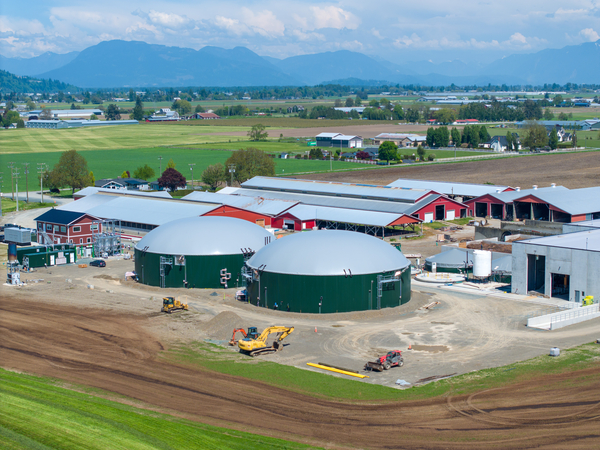The following is an article from VICA Instructor Tony Healy. For more information on Tony and his courses, visit his instructor page, here.
Harnessing the Power of Strategy Systems to Win Big
Those who have to win, win a lot. Those who fear losing, lose a lot. – John Whitmore
How did you get into business? Were you motivated by the idea of a greater sense of control over your life, greater work-life balance, create generational wealth, challenge the status quo, serve your community or pursue your life’s passion? Whatever your motivation, you are in the game now. As such, have you figured out if you are playing to win or just playing to play. You had better be playing to win. In the harsh reality of the business market, competitive advantage provides the only protection a company can have. So, if you want to survive, you had better be playing to win, and solid strategy is a way to increase your chances to win—and nothing less. What is your strategy for success? Not your business plan; your strategy. Have you defined it?
You should have because a good strategy provides a set of guiding principles or rules, that clarify the actions people in the business should or should not take and the things they should prioritize (or not) to achieve desired goals. [1]
If you are realizing that you haven’t given it enough thought before now, Harvard University’s strategy expert and world-respected business consultant, Roger Martin, provides a simple system from one of his seminal works on strategy and playing to win in today’s turbulent world. He breaks down his approach to strategy as a coordinated and integrated set of where-to-play, how-to-win, core capability, and management system choices that uniquely meet a consumer’s needs, thereby creating competitive advantage and superior value for a business.[2]
How you define winning should be at the heart of any strategy. Building on that, in Martin’s terms, a strategy is a coordinated and integrated set of five choices: a winning aspiration, where to play, how to win, core capabilities, and management systems. Your choices at each level and the relationship between them can be thought as reinforcing feedback loops that cascade down with the choices at the top setting the context for the choices below, and choices at the bottom influencing and refining the choices above, and so on.
Using this model, have a look at your company, division, market segment etc. and ask yourself, “what is our winning aspiration?” Aspirations are statements about the ideal future. Whatever the aspiration, your company must play to win. Simply participating is self-defeating and a recipe for mediocrity. Do your current actions align in strategic terms with the purpose of your organization, your guiding mission and aspirations, and set you up to win?
The next two steps on the cascade, where-to-play and how-to-win, are tightly bound up with one another, form the very heart of strategy and are the two most critical questions in strategy formulation. Without clearly defined where-to-play and how-to-win choices connected to the aspiration, a vision is frustrating and ultimately unfulfilling for employees. The company needs accurate where and how choices in order to act. Without them, it can’t win.
Where-to-play represents the competitive field—in which markets, with which customers and consumers, in which channels, in which product categories, and so on. Choosing where to play is also about choosing where not to play. Where one market may be saturated or dominated by outsized competition, other markets may suit your company perfectly. These questions are important to understand which where-to-play choices will best enable your company to win.
While where-to-play selects the playing field, how-to-win defines the choices for winning on that field. It means providing a better consumer and customer value equation than your competitors do, and providing it on a repeated basis within a suited context. Beware though, you cannot be all things to all people. Focus on where you can provide your best value. It is not how to win generally, but how to win within the chosen where-to-play domains.
Where-to-play and how-to-win choices work best together; a strong where-to-play choice is only valuable if it is supported by a potent and actionable how-to-win choice. The two choices should reinforce one another to create a distinctive combination. Use a tool like Porter’s Five Forces to get valuable insight when making your where-to-play and how-to-win decisions.
Once you have set aspirations and determined where to play and how to win, you can consider capabilities with respect to those choices. You must then align your core capabilities to support your strategy. You need to ask two questions: (1) what capabilities must be in place to win, and (2) what management systems are required to support the strategic choices?
Your capabilities are the activities and competencies that critically underpin your specific where-to-play and how-to-win choices. When your core capabilities are performed at the highest level, they enable your organization to bring its where-to-play and how-to-win choices to life. Think of them as operating as a system of reinforcing activities that designed to deliver your chosen strategy.
Even if you set a winning aspiration, determine where to play and how to win, and define the capabilities required, your strategy can still fail—spectacularly—if you fail to establish management systems that support those choices and capabilities – systems that foster, support, and measure the strategy. Don’t forget measurement provides focus and feedback.
Ultimately, when it comes to strategy, there are no absolutes or guarantees, and things change. Having a clear definition of winning, a solid analytical framework and a thoughtful review process can help organize thinking, improve analysis and set you up for a win, but even with all that, a successful outcome is not guaranteed. There are other players in this game and they are all trying to win too. In the end, building a strategy is about shortening your odds and giving yourself the best chance to win!
[1] https://hbr.org/2007/09/demystifying-strategy-the-what
[2] Lafley, A.G.; Martin, Roger L.; Playing to Win (p. 25). Harvard Business Review Press. Kindle Edition







